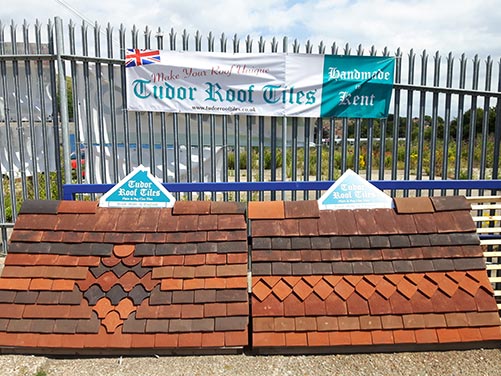Tudor Roof Tiles.
access_timePosted 17th October 2023
Achieving the best visual effect from roof tiles is what all involved seek to achieve and this requires cooperation across the supply chain.
The RTA have this month updated their guidance document which sets out best practice from ordering and inspection through to site handling, installation and sign off, to ensure the best possible roof for home and property owners.
The document discusses issues that can influence the appearance of the roof tiles when installed; some of these are inherent in the manufacturing process, others can be caused during transport and installation while others are natural and intrinsic to raw materials.
Focused on the two main types of roof tiles used for pitched roofing (clay and concrete), items discussed are:
Ordering. On site stock management. Inspection.
Mixing of tiles from different pallets. Acceptance. Appearance complaints handling.
The guidance then goes on to discuss and example common aesthetic issues with concrete and clay tiles:
Raw materials variation. Variegated Colours. Scuffing.
Poor paint finish - concrete. Efflorescence - concrete. Other common causes of colour variation.
The section focussed on clay roof tiles says:
Clay is a natural material made up largely of inorganic clay minerals (kaolinite, illite, montmorillonite etc.) and quartz (sand), along with smaller quantities of other components such as iron oxides, carbonates, pyrite, organic material etc.
Clay is found in large quantities right across the UK laid down many millions of years ago. There are many different seams of clay (Etruria Marl, Lower Oxford, Weald, London) to name a few. Each has its own mineralogy and chemical composition and subsequently fires differently, offering a range of colours post firing. Manufacturers will often blend two or more
different clays to help achieve different tile colours, tensile strength and frost resistance.
Small changes in the mineralogy across clay seams or the blend, along with position of the product in the kiln can have an impact on the fired colour of the finished product. After every firing slight colour shifts occur, these will over a period of time result in tiles that are either darker or lighter than a burn from say 3 months previously.
To overcome this tile manufacturers always recommend mixing of tiles from a minimum of 3 pallets at all times. This will help to blend tonal shade variation found within the
individual firings, and to even out size variations due to different shrinkage rates that occur during the
firing process. Failure to mix tiles will not affect their performance, but aesthetics may be compromised.
Clay roof tiles and fittings (ridge, hip and valley tiles) may require sorting on site to achieve the desired appearance. Clay fittings are commonly manufactured and fired separately from the roof tiles which may lead to slight colour variations.
The British Standard, BS EN 1304 covering product specification for clay roofing tiles and fittings acknowledges that variations are inherent in the ceramic fabrication process and these will affect both geometric characteristics such as length, width, camber and twist, and appearance characteristics such as colour and texture. As such, it should be recognised that variations in geometry and appearance do not constitute a fault with clay tiles and fittings.
Note: Extractions from original guidance document publication Read More -link to original.





